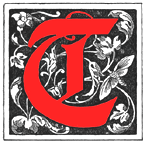
he term homosexual as an adjective barely comes into a strictly chronological Victorian Period, with the nounal usage E20 (The Shorter English Dictionart (SOED) ). Sigmund Freud (1905) continued to use the term inversion in his important Three Essays. In the first essay, “Sexual Aberrations,” he discussed ‘The Sexual Objects of Inverts’: “An inverted man…is like a woman in being subject to the charm that proceeds from masculine attributes both physical and mental”, though he cautions that this is not a full or accurate description for all male inverts. Under “The Sexual Aim of ‘Inverts’” he noted that “Among women too, the sexual aims of inverts are various…”
Five years earlier Freud had worked on his famous and controversial case of “Dora”. The eighteen year-old Ida Bauer had entered analysis with him in October 1900, departing eleven weeks later. Freud wrote up the case in January 1901, but withheld publication until 1905. Not until well into the case report, nominally on hysteria, does he disclose his early language preference: in touching upon the therapist’s reactions to the intimate disclosures of the patient - whose sexual function “has extended its limits…(to)…the sexual perversions…(and the)…uncertainty in regard to boundaries of what is to be called normal sexual life”, Freud mentions by way of illustration “perversion which is most repellent to us, the sensual love of a man for a man”.
He then reminds his readers that in Ancient Greece people “far our superiors in cultivation” were accustomed to bestow trusted social positions to such individuals [SOED homo-, from the Gk. “the same”. L19]; and he adds that the perversions need be “neither bestial nor degenerate” and that such personalities are often involved in “a great number of our cultural achievements”, (Freud, 1905, I). See also Kuppfer (1900), an anthology of homosexual writings by the author-artist, as a response to the imprisonment of Oscar Wilde.
Bibliography
Ellmann, Richard. Oscar Wilde. London. Hamish Hamilton, 1987.
Ellis, Henry Havelock.Studies in the Psychology of Sex. Philadelphia. F. A. Davis Co. 1901.
Original publication in German, Leipzig 1897. Vol. 2 of an eventual six-volume set published in English before World War 1.
Ellis, H. H. Man and Woman. A Study of Human Secondary Sexual Characters. London: Walter Scott Ltd., 1894.
Freud, Sigmund. Fragment of an Analysis of a Case of Hysteria. (1901) 1905. Original published in a neurological journal; later in Freud’s collected works. See Standard Edition of the Complete Psychological Works of Sigmund Freud”, edited by James Strachey, Anna Freud et al. in 24 vols. Vol. VII. London. Hogarth Press & Institute of Psychoanalysis. New York: I.U.P. 1953-75.
Freud, S. Three Essays on the Theory of Sexuality. Original German edition at Vienna by Deuticke. 1905. For definitive English edition see above entry, Vol. VII.
Jones, Ernest. The Life and Work of Sigmund Freud. Vol. 1. London: Hogarth Press, 1953; New York: Basic Books, 1953.
Krafft-Ebing, Richard von.Psychopathia Sexualis, with special reference to Contrary Sexual Instinct. A Medico-Legal Study.Philadelphia. F. A. Davis Co. 1893.
Translated by C. G. Chaddock, from German 7th edition.
Kuppfer, Elisarion von.Lieblingminne und Freundsliebe in der Weltlitteratur.Berlin. Berlin-Neurahnsdorf A. Brand. 1900. (Darling and Friend Love in World Literature). An anthology of critical texts. Dismissed the opinion of Hirschfeld and others, of inversion-homosexuality being classified as a “third sex”.
Last Modified 10 February 2021